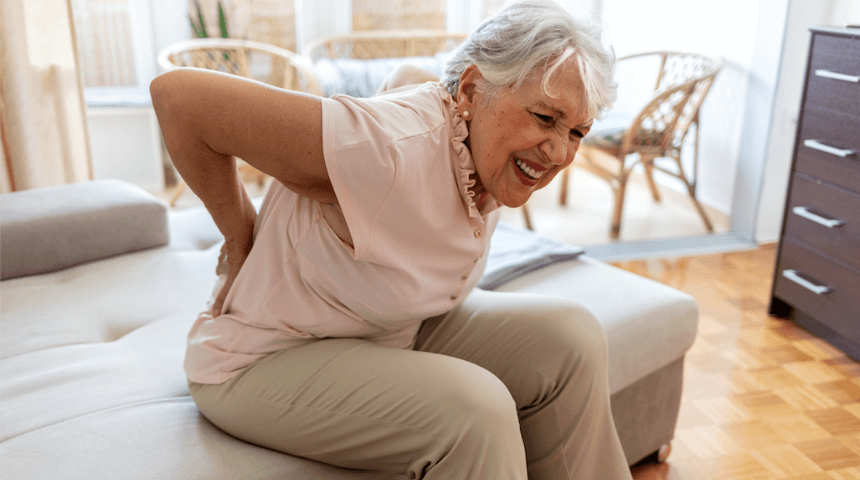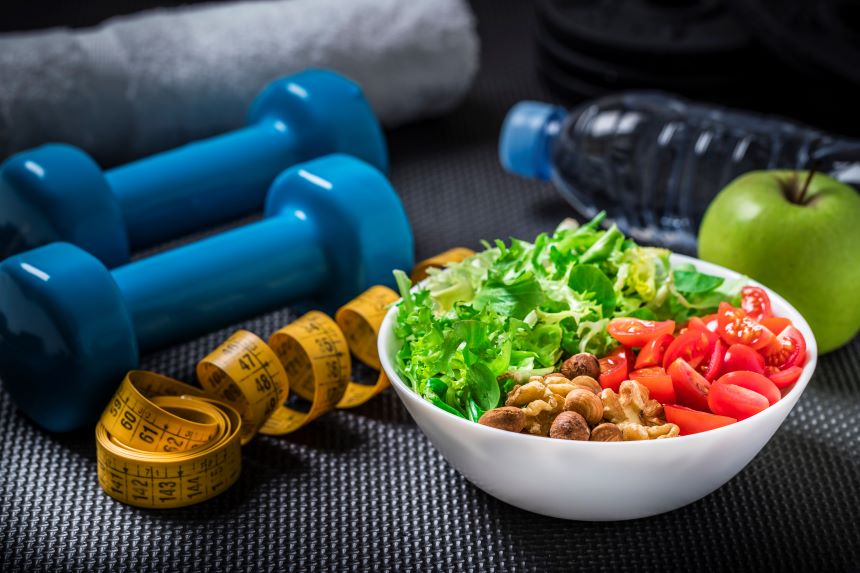With more than 600 muscles in your body, it’s virtually impossible to work on strengthening each of them. But as you age, building or at least maintaining muscle mass can play a key role in a long, healthy life.
Having strong muscles can help protect you against diabetes, boost your metabolism, strengthen your cardiovascular and musculoskeletal systems, and improve your mental health.
When you head to the gym, it’s tempting to focus on the more obvious muscles, including your arms, shoulders, chest, back, legs and calves. But there are other muscle groups that can help you avoid injury while enjoying an active lifestyle.
As with any exercise plan, you should talk with your doctor first to make sure you are healthy enough and that the exercises you’ve chosen are safe for you.
Glutes
Your gluteal muscles form the foundation of your buttocks and serve as one of the primary stabilizers of your core. A strong core – including pelvis, lower back, hips and stomach – gives you balance and stability and helps you avoid injury while doing a wide range of everyday activities. Ignoring these muscles also saps your body’s ability to take full advantage of muscles in your upper body, arms and legs.
Your glutes can be strengthened through Pilates and several exercises, including:
Clamshell: Start by lying on your right side with your legs bent at a 45-degree angle. Your feet, ankles, knees and hips are stacked on top of each other, while your right forearm is resting on the ground and supporting you.
Keep your feet together and lift your left knee up as high as possible without shifting your hips or pelvis. Hold for five seconds and lower your knee. Do two sets of 10 repetitions on each side.
Obliques
Your obliques – another component of your core – are the muscles on your side that attach to your spine. They help with spinal alignment and bending or turning your body from side to side. When these muscles are weak, it can contribute to back or hip issues.
Among the exercises:
Side plank: Start by laying on your right side, supported by your right forearm, which is facing away from you. Keep your legs straight, with your left leg stacked on top of your right.
Then lift your hips off the ground, supporting your weight with your right elbow and the side of your right foot. Keep your body in a straight line between your head and ankles. The goal is to hold the position for 60 seconds, but you may need to work up to that. Repeat on the left side.
Grip Strength
The muscles in your hand affect your ability to lift and carry things. Letting those muscles deteriorate will hamper everyday activities, including simple tasks like opening a jar of jelly. The amount of weight you can carry – and the duration you can carry it – will also start to slip.
The simplest method for strengthening your grip is to use a set of hand grips. You can find them in various strengths (to match your abilities) along with specific exercise plans. But you can accomplish a great deal simply by keeping one on your desk, by the couch or in your car and using it regularly during your down time. Start by squeezing it 10 times in each hand, doing two to four sets. You can increase the resistance level as you strengthen your grip.
Rotator Cuff
The rotator cuff is a small group of four muscles surrounding and supporting your shoulder joint. Rotator cuff problems are common and are often linked to poor posture by people who spend all day in front of a computer. Sitting with your shoulders forward can cause tightness in the muscles on the front of your chest and shoulder, followed by weakness in the muscles in the back of your neck and your shoulder. That imbalance leads to strains in the rotator cuff muscles and tendons.
Strengthening your rotator cuff requires a mix of exercises, each aimed at one of the four muscles. With strength bands, you can do these exercises at home, focusing on external rotation, internal rotation, extension and abduction. With each exercise, use a resistance band attached to a door or other stable object. There should be slight tension in the band before you start each exercise.
Shoulder external rotation: Start with your feet shoulder-width apart while standing perpendicular to the door. Grasp the band in the hand that is farthest from the door.
Keep your elbow tucked at your side and slowly rotate your shoulder outward until your hand is pointing away from the door. Hold the final position for two seconds and slowly return to the start position. Do 10 to 15 repetitions with each shoulder.
Shoulder internal rotation: Start with your feet shoulder-width apart while standing perpendicular to the door. Grasp the band in the hand that is closest to the door.
Keep your elbow tucked at your side and slowly rotate your shoulder inward, with your hand pointing toward your navel. Hold the final position for two seconds and slowly return to the start position. Do 10 to 15 repetitions with each shoulder.
Resisted shoulder extension: Start with your feet shoulder-width apart while facing the door. Grasp the band with either hand.
Slowly pull it backward while keeping your arm straight. You should pull slightly past your hip. Hold the final position for two seconds and slowly return to the start position. Do 10 to 15 repetitions with each shoulder.
Resisted shoulder abduction: Start with your feet shoulder-width apart while standing perpendicular to the door. Grasp the band in the hand that is furthest from the door.
Slowly lift your arm out to the side, keeping it in line with your body. You should reach your final position before your arm becomes parallel with the floor. Hold it for two seconds and slowly return to the start position. Do 10 to 15 repetitions with each shoulder.
Posterior Deltoids
The posterior deltoids are located behind your shoulders, where they help maintain posture. In that sense, they go hand-in-hand with your rotator cuff muscles. They’re often neglected during exercises for the shoulders because they aren’t as visible and they’re a little harder to train.
Among the exercises:
Seated rear delt raise: Start seated on a bench with a dumbbell in each of your hands, which are placed at your sides. Bend forward at your hips, with a straight back and tightened core.
With a slight bend in your elbows, extend our arms out the sides, raising the weight until your arms are parallel to the floor. Pause briefly before lowering the weights back to the floor. Do two to three sets of 10 repetitions.
Foot Intrinsic Muscles
Your foot intrinsic muscles are found inside your foot and are responsible for fine motor movements, giving them a key role in standing, walking and running. Weakness here can lead to problems like plantar fasciitis and Achilles tendinitis.
Among the exercises:
Towel crunch: For this simple exercise, you need a bath towel. Sit in a chair, with your bare feet flat on the floor, toes along the edge of the towel. Use your toes to crunch up the towel, working toward the other end of the towel. Repeat 10 times with each foot.
Choose to Stay in Touch
Sign up to receive the latest health news and trends, wellness & prevention tips, and much more from Orlando Health.
Sign Up










